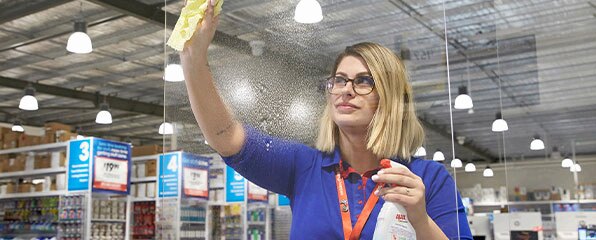
Commitment 12: Reduce emissions in our supply chain
What’s the issue?
While a significant amount of the emissions we are directly responsible for relate to energy usage, we are aware that indirect emissions, such as those relating to the manufacturing of the products we sell and their transportation, also play a part in contributing to climate change.
What are we doing?
While these emissions are outside of our direct control, there is still plenty we can do to help our partners and suppliers reduce them, and therefore, their impact on the climate. Our first step is to conduct data analytics and research to better understand our Scope 3 emissions profile (those indirect emissions associated with our supply chain activities). We completed an initial analysis in FY2020 so we could pinpoint where we needed to focus our efforts first, and further refined this during FY2021. These findings demonstrate that the activities which cause the highest emissions, are those relating to the raw materials and production of technology products.
Many of our international suppliers have already set their own carbon emission reduction strategies. We will continue working with them, as well as suppliers who aren’t quite there yet, so we can all work towards the same goal of reducing our climate impact. Additionally, we are rethinking how we design products in line with circular economy principles that prioritise renewable and recycled content, that can be recycled or reused at the end of their life. Embracing this approach across products and packaging contributes to reducing our scope 3 emissions.
Focus for FY2022
Scope 3 data is complex, and constantly evolving, therefore we will continue to undertake further data analytics to help inform our priorities and opportunities where we can influence emission reductions throughout our value chain and work closely with our suppliers to implement these changes. As our datasets and future modelling improves, we will look to establish a long-term scope 3 emissions reduction target.
Learn more about another 2025 commitment
Our Team
Our Community
Human Rights
Climate Action
Circular Economy
How are we going so far? Find out in our 2019-2020 report.
Information
- About Us
- Policies
- Social Media House Rules
- Price Beat Guarantee
- Payment Options
- Express Pay
- Afterpay
- Zip
- Flybuys
- Optus Bundle Bonus FAQs
- Quality Print Promise
- Our delivery options
- Return Policy
- Product Recalls
- Terms of Use
- PCI FAQs
- Privacy Policy
- Scam Warnings
- Whistleblower Policy
- Gift Card Policy
- Rate & Win Competition Terms & Conditions
- OnePass
- CES Prize Draw TCs
- Payment Options
- Officeworks App
- Track your order
- Click & Collect
- Cost per page
- 3D Secure
- Customer Communications
- Talking point


 has the facebook
has the facebook




















